In this article, I will tell you about the material for insulation of the walls - mineral wool, called the people of Minvata or mineral water. Mineral wool is a universal insulation that is made of fibers of structures, it is obtained as a result of melt rocks and slags of metallurgy. Most often, the mineral wool product is made from raw materials of rocks. Wall insulation from inside Minvata is not a rare phenomenon today.
What you need to know about the Minvat?
Mineral wool for insulation of walls can be three species, it all depends on which source material was used for the manufacture of wool.Based on fiberglass (glass wool)
Raw materials for manufacturing glass gamble is glass, but no more than eighty percent. The composition also includes sand, bora, soda and limestone. Fiber thickness from 5 to 15 microns, length 15 - 50 mm. Withstand temperature loads from - 60 to + 450 ° C.
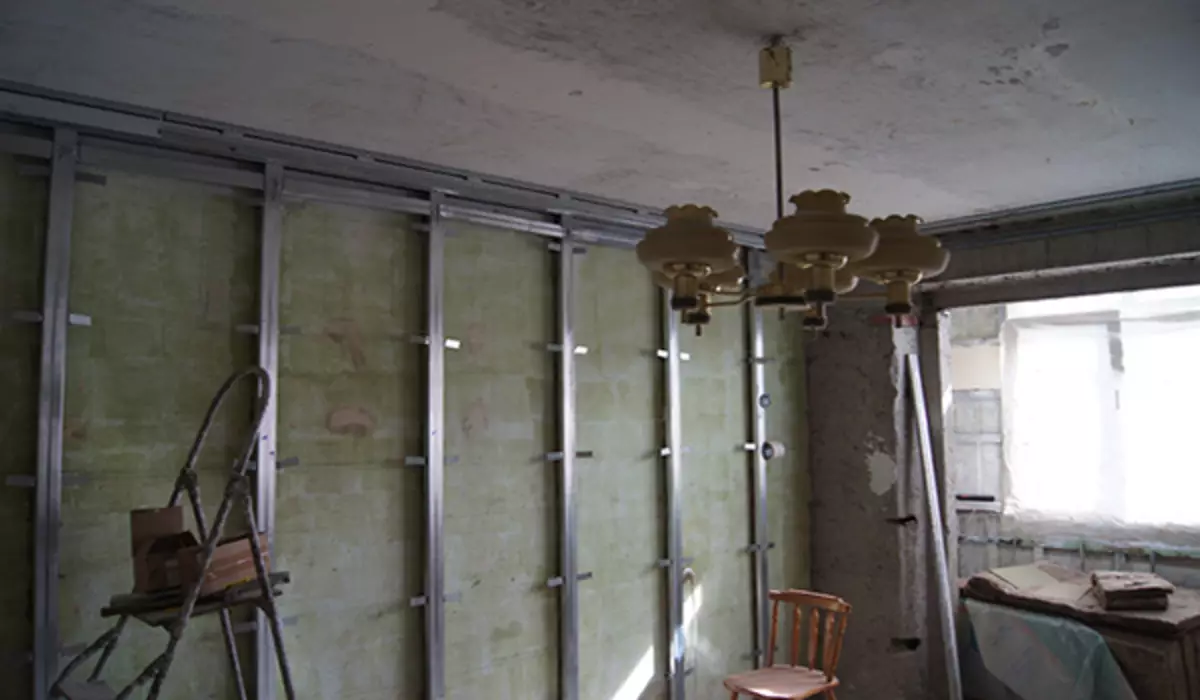
Advantages and disadvantages:
- It has increased elasticity. The material can be folded in several layers, while it will not deteriorate;
- Resistance to vibrations;
- Magnificent moisture resistance. This material is practically waterproof;
- The purity of the material and the absence of toxic components, hence the minimum damage to the human body;
- Fire resistance. The material is absolutely non-flammable;
- Not exposed to mold, fungus. Mineralka does not rot;
- Absolutely not edible for rodents (rats, mice);
- When working with the material, reinforced precautions are necessary;
- Some species contain formaldehyde.
Based on slags (slag wool)
The raw material for the production of slag wool is metallurgical slags, which are made by processing into vitreous fibers. It has a thickness of fibers from 4 to 12 microns, and a length of 16mm. Among all kinds of mineral wat, this species is withstanding the smaller temperature - 300 ° C.
Advantages and disadvantages:
- Has high chemical resistance;
- Easy and ease in circulation when installing. Vata is made in rolls;
- Ecology. The material contains a minimum amount of components harmful to the human body;
- Not resistant to high temperatures. At temperatures above 300 ° C, the fibers begin to melt and the material loses its operational qualities;
- Hygroscopicity and residual acidity;
- Fiber fragility. Fibers are cracking, and dust from them appears in the air.
Article on the topic: Great solution - Balcony door double-glazed
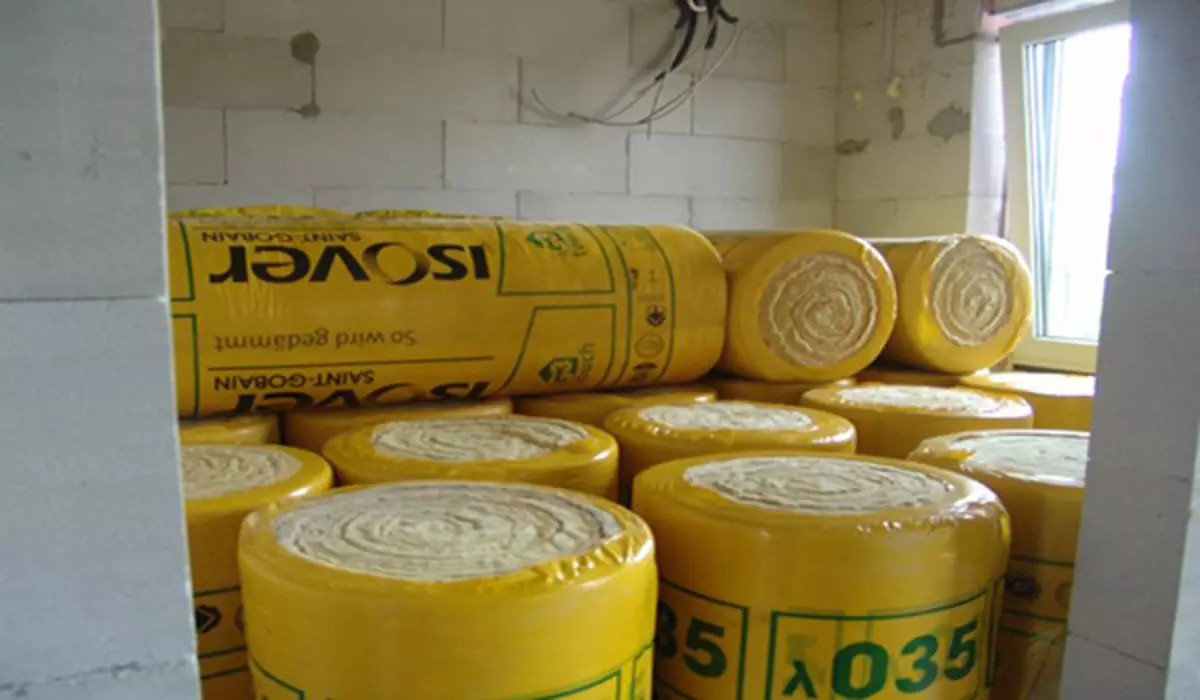
Based on stone fiber (stone wool)
The raw material from which this material is produced is the rock, namely: Gabbro-basalt, metamorphic breeds, Mergeli. The thickness of the fibers almost corresponds to the size of the slag wool fibers.
Stone wool products can withstand very high temperatures provided that the material is not deformed. Wool fibers withstands up to 1000 ° C. Unlike glass and slag wool, the stone wool fibers do not stick, it simplifies the appeal to it.
Advantages and disadvantages:
- Has low thermal conductivity. Keeps heat in the house;
- It has a very long life. Shelf life up to forty years;
- The material is not afraid of the impact on it of mold;
- Has high noise insulation indicators;
- Resistant to vibrations;
- Eco-friendly material;
- Has high fire safety;
- Convenient when mounting;
- High price;
- Heat leak is possible through the seams. Whatever it is to avoid, it is necessary to connect the wool plates with each other as close as possible;
- It does not withstand large mechanical loads.
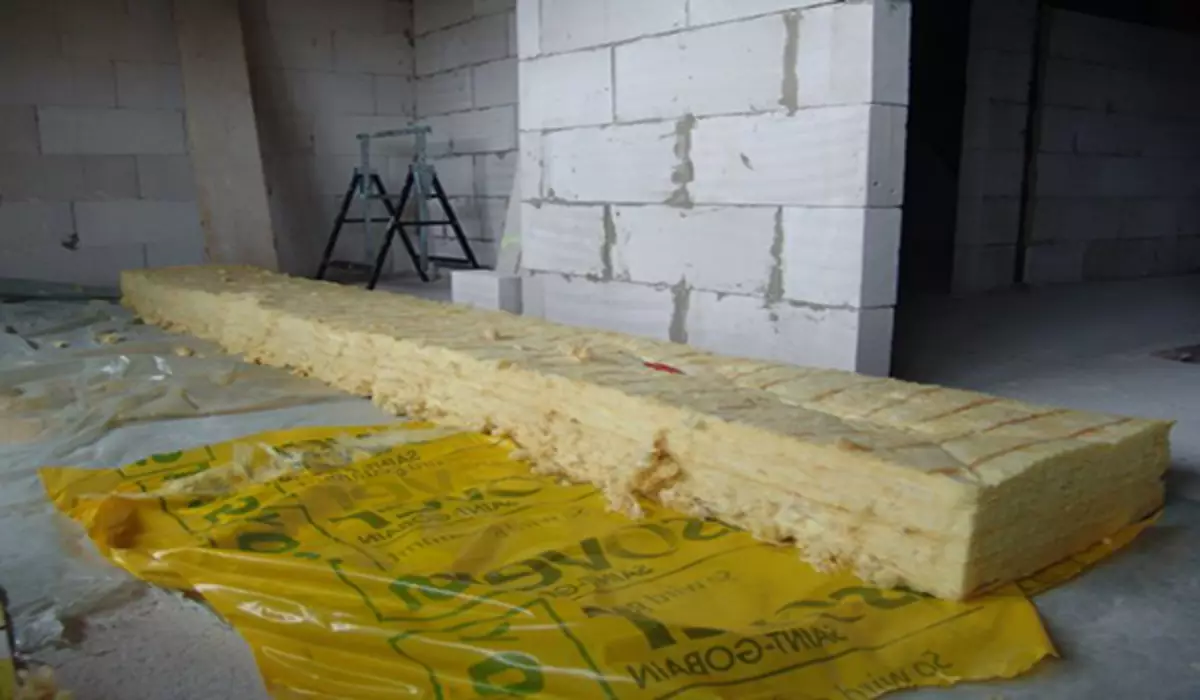
Pros and cons internal insulation
It is not distinguished, but often the insulation of the walls of Minvata from the inside has more drawbacks rather than advantage.
Advantages of internal insulation:
- The convenience of the process. Work on internal warming of the house can be performed at any time of the year. No need to build forests to create a height, and stool is suitable;
- The facade of the building remains the same, that is, it can be preserved;
- Good sound insulation properties;
- Pricing for work and material for twenty percent cheaper from the price of outdoor insulation.
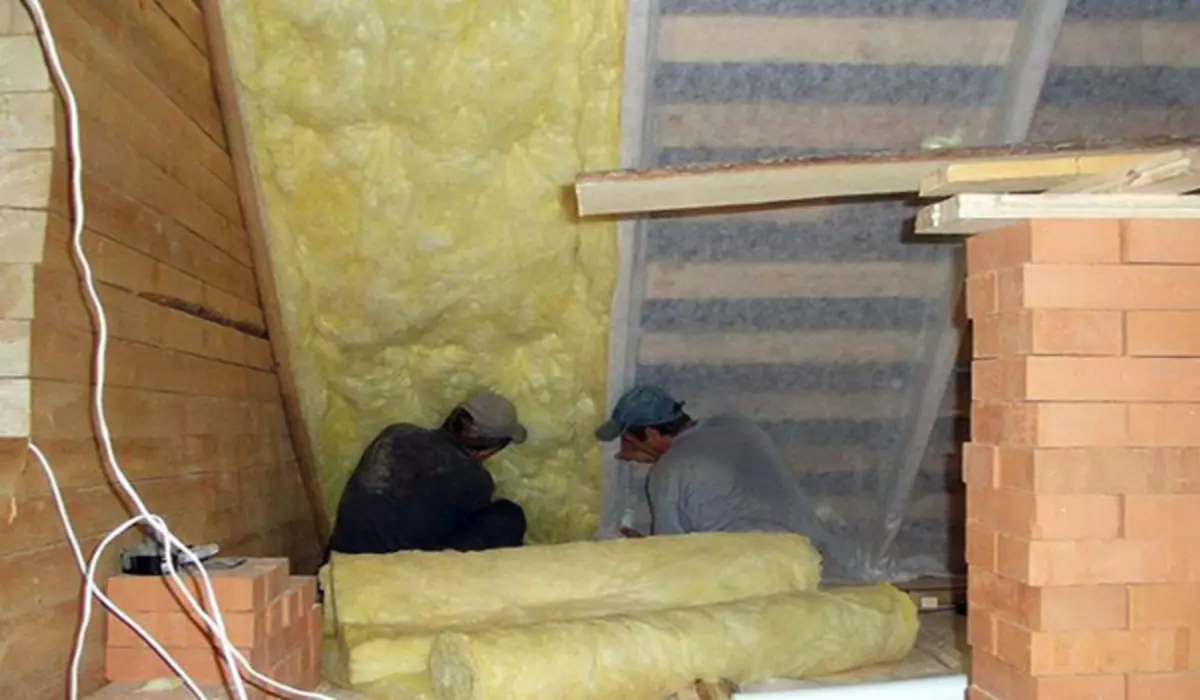
Disadvantages of internal insulation:
- The size of the room is reduced due to the applied insulation. It is necessary to be prepared for the fact that the wall will increase, and the room will decrease by ten centimeters (at least) on each side;
- Fungus and rotting walls due to poor condensation of walls. The wall gradually accumulates moisture that does not evaporate, and the mold is going on the walls and mold, and the house smells with dampness. I will tell you that this is a very unpleasant situation;
- In case of disconnecting the heating system in the house, it will quickly cool. This is because the insulation has low inertia;
- If there are sockets on the wall, they must be transferred to the warmed layer, and this is additional work and time.
Article on the topic: Computer in auto hand
Precautions when working with material
I will talk about the precautionary measures when working with insulation - mineral wool. Since this material is cheaper than others, it is used very often. Not rarely used for insulation and polystyrene foam. Often the mineral insulation for the walls is more dangerous.
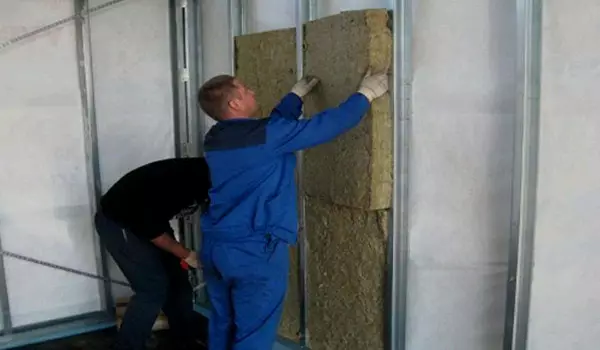
- Individual protection. First of all, before work, it is necessary to maximize the respiratory tract and the body from the possibility of getting dust from fibers. Fibers cause irritation and itching. When inhalation of dust or it gets into open areas of the body, it is necessary to rinse thoroughly with water. To work, you need to use a protective overalls, respirator, mask, gloves;
- All cutting and grinding work must be performed in a well-ventilated room;
- Store and use food and various drinks in the room where construction works are categorically prohibited;
- At the end of the work, it is necessary to immediately take the shower (preferably cold). Clear clothes. If after all the itching procedures did not disappear completely, do not be discouraged, this short-term sense will be held in a few hours.
Installation
Wall insulation from within Minvata - has several installation options. I will tell about two - basic methods. Both options are practical and simple, the main thing follows the instructions.Technology First - Laying Minvati between structural elements
For this type of installation, you need to use mineral wool made in the form of plates - it will make it easier for laying. The first stage is necessary on the entire surface of the insulated wall of the waterproofing layer, in order to significantly protect the wall from moisture.
The second stage is the creation of a metallic fastening profile for wool in the form of lattices. These lattices need to lay insulation.
In order to prevent the appearance of the slots between each grille, the insulation is as close as possible. Cut the insulation with a reserve of several centimeters for each edge. For better thermal insulation, minerals need to be laid in several layers.
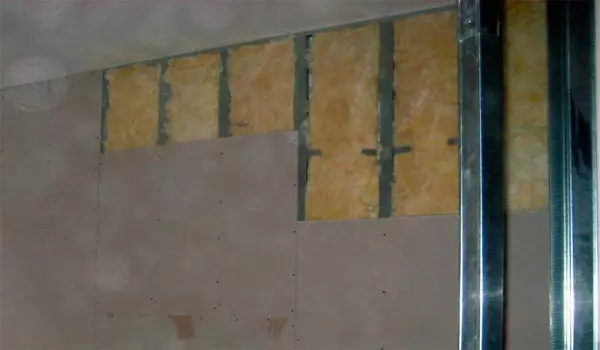
The third stage is the mounting of the vapor barrier layer (the parobarar). To do this, you can use the most ordinary film, preferably without damage. The last step is the walls of the wall. Here each owner decides in his own way than he will sow. As for me, it is appropriate to use drywall.
Article on the topic: Nuances when installing double balcony doors
Technology Second - Mounting Minvati directly to the surface
I advise you to resort precisely to this type of installation, as it will significantly save time. This method of installing the insulation is simpler, but no less practical. It provides for the installation of insulation slabs with glue or mastic on the surface.
First of all, it is necessary to prepare the surface. Clear it from all the protruding details, well clean and immersing. Only after that it can be applied for the attachment of minvati. What would be not deformed in the future, and which did not get worse, it is additionally needed to attach a dowel (fungi).
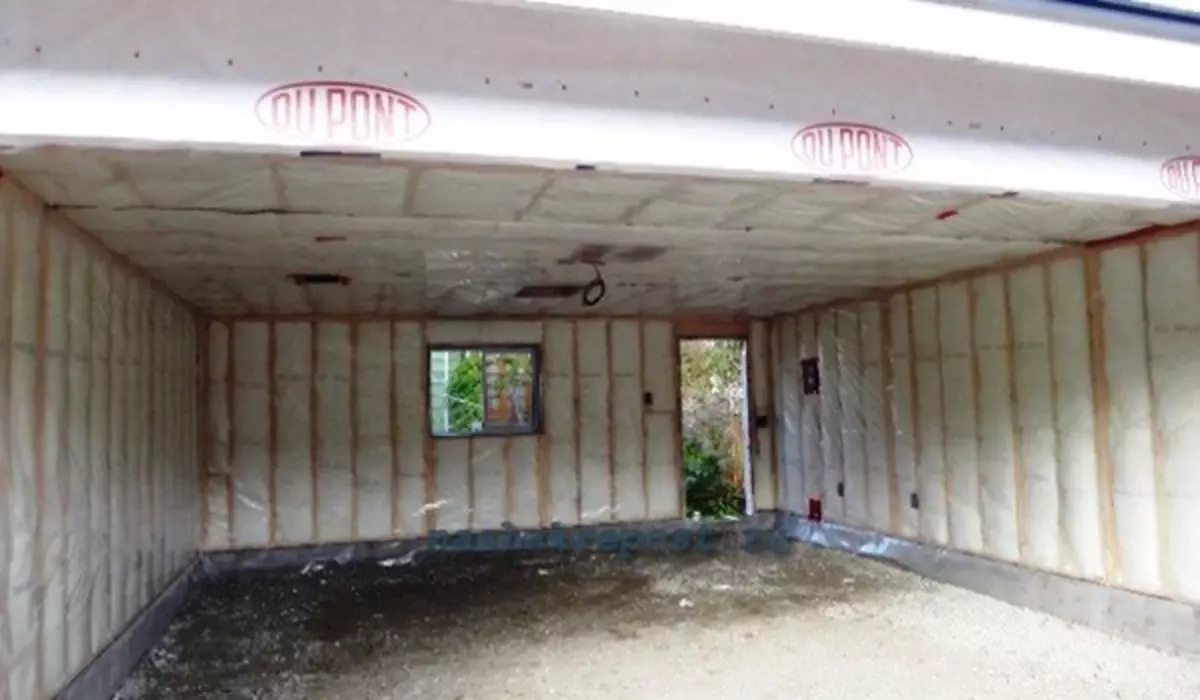
After laying the insulating layer, the reinforcing layer is stacked on it - the lattice. Its function to strengthen not only the whole design, but in the future to protect the material from damage. The last stage of the work is applied to the protective grille of primer and plaster.
Some good tips
- To avoid mistakes, you need to accurately comply with the instructions;
- For high-quality installation of the material, the stove must have a width of more than one meter;
- In order for the mineral wool to warm the walls, it is necessary to last, you need to create a high-quality parobararier;
- The material must be tight and smoothly lying on the surface. Filling the lattice insulation, it is important to prevent the gaps;
- Wall insulation with mineral wool slabs much easier than using mineral water in rolls;
- The wall on which the insulation is applied should not have cracks and defects.
Video "Wall insulation from inside stone mineral wool"
In the video, the expert is briefly and in an accessible form describes each stage of work on the insulation of the inner walls.
